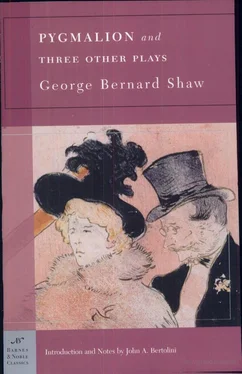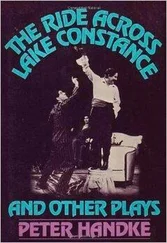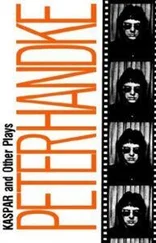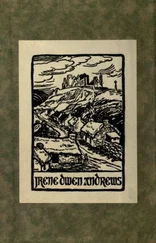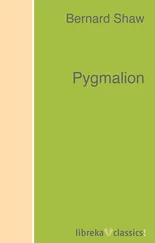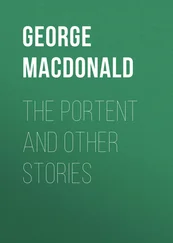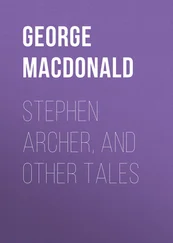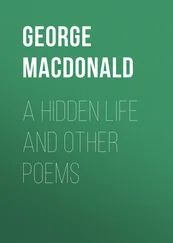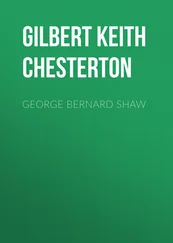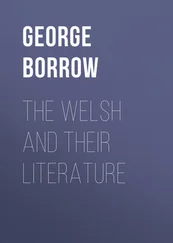4 (p. 226) I was reproached during the performances of The Doctor’s Dilemma at the Court Theatre in 1907: The Court Theatre is where many of Shaw’s plays were first performed between 1904 and 1907. These productions consolidated his reputation as an accomplished, provocative, entertaining modern playwright. This preface to The Doctor’s Dilemma was written after it had been rehearsed and performed at the Court Theatre. Shaw always advised readers to attend to his prefaces after they had seen or read the play.
5 (p. 253) His combination of soft manners and responsive kindliness, with a certain unseizable reserve and a familiar yet foreign chiselling of feature, reveal the Jew: Although Shaw’s observations here of racial characteristics are without self-consciousness or prejudice, his calling attention to Doctor Schutzmacher’s racial identity was deemed too controversial when a film version of the play was made in 1958: The character was omitted in the adaptation.
6 (p. 258) “What is it the old cardinal says in Browning’s play? ’I have known four and twenty leaders of revolt’ ”: The “old cardinal” is the papal legate Ogniben (Everygood in Italian), in English playwright Robert Browning’s A Soul’s Tragedy (1846); in the play, Ogniben cynically manipulates the protagonist, Chiappino, into demonstrating how unreal his political idealism is. Sir Patrick plays a somewhat analogous role in Ridgeon’s adventure of self-discovery. (Shaw had been a member of the Browning Society and knew Browning’s verse dramas well.)
7 (p. 267) “Walpole! the absent-minded beggar”: The reference is to English writer Rudyard Kipling’s 1899 poem “The Absent-minded Beggar.” The accent in the delivery of B.B.’s line falls on “absent-minded”; “beggar” is used here figuratively to mean “fellow,” not an actual “beggar.”
8 (p. 317) “I don’t believe in morality. I’m a disciple of Bernard Shaw”: Michael Holroyd reports in his biography of Shaw (Bernard Shaw, vol. 2; see “For Further Reading”) that a blackmailer once tried to justify his criminal behavior by claiming he was a disciple of Shaw. Such a misuse of his works, Shaw felt, was due mainly to journalistic misrepresentations of his ideas.
9 (p. 341) “I believe in Michael Angelo, Velasquez, and Rembrandt; ... Amen”: Shaw indicated that Louis’s prayer derives from a story by German composer and writer Richard Wagner, “An End in Paris” (1841), in which the composer-protagonist professes a similar creed, but with “God, Mozart, and Beethoven” where Louis has his trinity of great artists.
10 (p. 346) “I think it is Shakespear who says ... The readiness is all”: Shaw said that this hilarious mismatching and mangling of lines from Shakespeare’s plays was inspired by the duke’s fearful version of Hamlet’s “To be or not to be” soliloquy in Mark Twain’s 1884 novel Adventures of Huckleberry Finn (chapter 21). First, B.B. switches the order of “good” and “evil” in Marc Antony’s famous observation, “The evil that men do lives after them, / The good is oft interred with their bones” ( Julius Caesar, act 3, scene 2). “If tis not today, twil be tomorrow” approximates Hamlet’s “If it be not now, yet it will come” (Hamlet, act 5, scene 2). “Tomorrow and tomorrow and to morrow” is from Macbeth’s despairing speech (Macbeth, act 5, scene 5). B.B. next comes close to Macbeth’s words about Duncan: “After life’s fitful fever he sleeps well” (act 3, scene 2). “And like this insubstantial bourne ... wrack behind” combines Hamlet’s “from whose bourne no traveler returns” (act 3, scene 1) with Prospero’s “And like this insubstantial pageant faded / Leave not a rack [cloud] behind” (The Tempest, act 4, scene 1). “Out, out, brief candle” is Macbeth’s speech (act 5, scene 5). “Nothing canst thou to damnation add” is Othello to Iago (Othello, act 3, scene 3). Finally, B.B. returns to Hamlet’s same speech about Providence for “The readiness is all” (act 5, scene 5).
PYGMALION
1 (p. 361) Melville Bell: The reference is to American teacher of elocution Alexander Melville Bell (1819-1905); inspired by his wife’s deafness, he invented “visible speech,” a system of written sounds, to help deaf-mutes communicate.
2 (p. 367) St. Paul’s Church: In later editions Shaw specified, “Not Wren’s cathedral but Inigo Jones’ church.” Inigo Jones (1573-1652) and Sir Christopher Wren (1632-1723) were renowned English architects. Jones restored Saint Paul’s Church in 1634; Wren designed the new Saint Paul’s Cathedral after it was destroyed in the Great Fire of London in 1666.
3 (p. 369) “Ow, eez ye-ooa san, is e? Wal,fewd dan y’ de-ooty bawmz a mather should, eed now bettern to spawl a pore gel‘s, flahrzn than ran awy athaht pyin.Will ye-oo py me f ’them”: That is, “Oh, he’s your son, is he? Well, if you’d done your duty by him as a mother should, he’d know better than to spoil a poor girl’s flowers and then run away without paying. Will you pay me for them?”
4 (p. 374) “May I ask, sir, do you do this for your living at a music hall?”: The origin of this episode in the play can be found in a letter Shaw wrote to The Morning Leader (August 16, 1901) about his having been invited to the docks to explain elocution to the laborers. When Shaw instead explained to them the “phonetic alphabet,” they were amused and called him “a quick-change artist.” Also, though they recognized the difference between their pronunciation and that of educated people, “the nature of that difference — which they earnestly desired to remove — was a mystery to them.”
5 (p. 381) On the walls, engravings; mostly Piranesis: Giovanni Battista Piranesi (1720-1778) was an Italian architect and engraver; his Carceri (Prisons) engravings depict enormous and labyrinthine structures that, as geometric displays, appeal to Higgins’s scientific taste.
6 (p. 397) “You know, Pickering, that woman has the most extraordinary ideas about me.... I cant account for it”: Higgins’s lack of self-knowledge in regard to his domineering nature is comparable to Lady Britomart’s similar disingenuousness in Major Barbara. Ultimately, though, Shaw’s comic motif of willful egotists who fail to recognize themselves as such probably derives from Sir Anthony Absolute (in Richard Sheridan’s The Rivals, 1775), who, in the midst of a passionate fury, asks his son Jack to be “cool” like his father.
7 (p. 399) “his native woodnotes wild”: English poet John Milton (1608-1674) refers thus to Shakespeare in his poem “L‘Allegro” (line 134) in order to distinguish his own art as sophisticated and premeditated from Shakespeare’s spontaneous products of the imagination. Shaw made a similar distinction between himself and Shakespeare, whom he considered to be the master of word music, but poor in ideas. By recalling Milton’s lines here Shaw makes Higgins, the figurative version of himself, a Miltonist; like Milton, Shaw was anxious about his own originality in comparison to Shakespeare. Milton and his creation Satan (in Paradise Lost) and Shaw and his creation Higgins all want to be the authors of themselves.
8 (p. 409) Mrs. Higgins was brought up on Morris and Burne Jones; and her room ... is not crowded with furniture and little tables and nicknacks.... the Morris wall-papers, and the Morris chintz window curtains and brocade covers.... A few good oil-paintings ... (the Burne Jones, not the Whistler): English poet and artist William Morris (1834-1896), a friend of Shaw, introduced the idea of designing homes and furnishings according to aesthetic principles; he designed wallpaper, chintzes, and the like. Mrs. Higgins rejects Victorian horror vacui (“fear of empty spaces”) by not crowding her drawing room with “furniture and little tables and nicknacks”; in doing so, she proclaims her modernity. Edward Burne-Jones (1833-1898) was a pre-Raphaelite painter and an associate of Morris; Mrs. Higgins’s embrace of Burne-Jones shows that her modernity stops short of Shaw’s contemporaries, for she has no paintings in the more modern manner of Whistler.
Читать дальше
